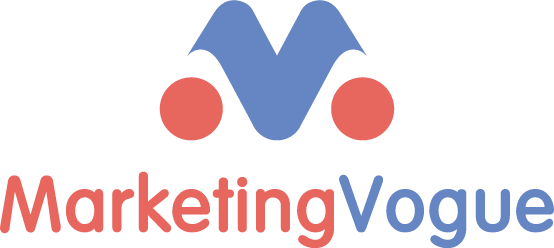The advent of Generative AI represents a groundbreaking fusion of creativity and automation, heralding a new era where machines are capable of producing original and imaginative content. This article delves into the transformative potential of Generative AI, exploring its applications across various industries, the ethical considerations it raises, and the evolving dynamics of human-AI collaboration. By examining the intersection of creativity and automation, we navigate the complex landscape where innovation and artistry converge with technology, reshaping traditional creative processes and offering a glimpse into the future of AI-driven creativity.
Introduction to Generative AI
Generative AI is like the Michelangelo of the digital age, combining creativity with automation to produce mind-boggling results. But what exactly is Generative AI and how did it come to be?
Defining Generative AI
Generative AI is a branch of artificial intelligence that focuses on creativity and imagination. It’s the brainchild of algorithms that can learn to generate content like images, text, and even music on their own, without human intervention.
Historical Context and Evolution
Generative AI isn’t a new kid on the block. It has been quietly evolving over the years, from basic text generation to sophisticated image synthesis. Thanks to advances in deep learning and neural networks, Generative AI has come a long way from its humble beginnings.
The Intersection of Creativity and Automation
Creativity and automation may seem like an odd couple, but in the realm of AI, they make a power duo that’s reshaping industries. Let’s dive into how Generative AI is striking a balance between human creativity and machine efficiency.
Exploring the Concept of Creativity in AI
Creativity is often thought of as a uniquely human trait, but AI is challenging that notion. Generative AI can brainstorm ideas, design visuals, and compose music, blurring the lines between man and machine in the creative process.
Automating Creative Processes with AI
Generative AI isn’t here to steal our jobs as artists and creators. Instead, it’s enhancing our capabilities by automating repetitive tasks, generating inspiration, and pushing the boundaries of what’s possible in the creative realm.
Applications of Generative AI in Various Industries
Generative AI isn’t just a cool tech trend; it’s a game-changer for multiple industries. From art and design to music and marketing, the applications of Generative AI are as diverse as they are innovative.
Art and Design
Generative AI is giving artists and designers a fresh palette to play with. From creating unique patterns to generating 3D models, AI is sparking new levels of creativity and pushing the boundaries of conventional art forms.
Music and Entertainment
Music lovers rejoice, as Generative AI is composing tunes that hit all the right notes. From generating melodies to creating entire soundscapes, AI is revolutionizing the music industry and opening up new possibilities for musicians and producers.
Marketing and Advertising
In the fast-paced world of marketing, Generative AI is a secret weapon for crafting compelling content. From generating personalized ads to designing eye-catching visuals, AI is helping marketers reach their target audience with tailor-made campaigns.
Ethical Considerations and Challenges
As we embrace the exciting world of Generative AI, it’s crucial to pause and reflect on the ethical implications and challenges that come with this technological marvel.
Issues of Ownership and Attribution
Who owns the creations of a Generative AI system? The lines of ownership and attribution can get blurry when AI is churning out original content. It’s a gray area that requires careful navigation and clear guidelines.
Bias and Fairness in Generative AI
Like any technology, Generative AI isn’t immune to biases. From skewed data sets to preconceived algorithms, AI can inadvertently perpetuate biases in its creations. It’s a challenge that demands transparency, accountability, and continuous monitoring.
Future Trends and Implications
The Potential for Disruption and Innovation
Generative AI is set to disrupt traditional creative industries by automating repetitive tasks and sparking new waves of innovation.
Collaboration between Humans and AI
The future of creativity lies in the synergy between human intuition and AI capabilities, leading to groundbreaking collaborations and fresh perspectives.
Impact on Traditional Creative Processes
Redefining the Creative Workflow
Generative AI is reshaping how creatives work, streamlining processes, and freeing up time for deeper exploration and ideation.
Enhancing Creativity through AI Tools
AI tools empower creators to push boundaries, experiment fearlessly, and unlock new levels of creativity previously unattainable.
The Role of Human Input in Generative AI
Human-Centered Design in AI Development
Prioritizing human input in AI development ensures ethical and user-friendly generative systems that enhance, rather than replace, human creativity.
Training and Supervising Generative AI Systems
By training and supervising generative AI systems, humans can guide the evolution of AI creativity, ensuring it aligns with human values and intentions.
Conclusion: Embracing the Potential of Generative AI
The fusion of human ingenuity and AI capabilities holds limitless potential for creativity, paving the way for a future where innovation knows no bounds. As we embrace the burgeoning capabilities of Generative AI and navigate the evolving landscape of creativity and automation, it becomes evident that the harmonious interplay between human input and artificial intelligence holds immense promise for innovation and advancement. By understanding the implications, challenges, and opportunities presented by Generative AI, we can chart a course towards a future where the boundaries between human creativity and machine-generated content blur, unlocking new realms of possibility and pushing the boundaries of what is creatively achievable.


